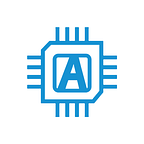MIPS and the Little Endians — Tips and an FAQ to help ace your computer architecture class and have fun doing so!
Cool tricks I found in the MIPS architecture and the MARS Simulator! Here are some tips and tricks to learning and coding in MIPS and with the MARS Simulator, most if not all these commands and tricks will also work in other IDEs.
First, make sure to read this post before proceeding… once you finish, come back here and enjoy!
Q: Is MIPS little or big endian? What does that mean? And what about the MARS Simulator?
A: According to the Patterson and Hennessey book (Computer Organization and Design: the Hardware/Software Interface),
MIPS is in the big endian camp. Since the order matters only if you access the identical data both as a word and as four bytes, few need to be aware of the endianness.
Newer versions of the MIPS chip can support both big and little endian (bi-endian?), unlike the previous versions. Nonetheless, MIPS is classically referred to as big endian.
As for the MARS simulator, It is considered little-endian.
How to check: You can test this, in the data segment (`.data`) write:
store: .byte 0,0,0,1 #load 4 entries, each a byte long
